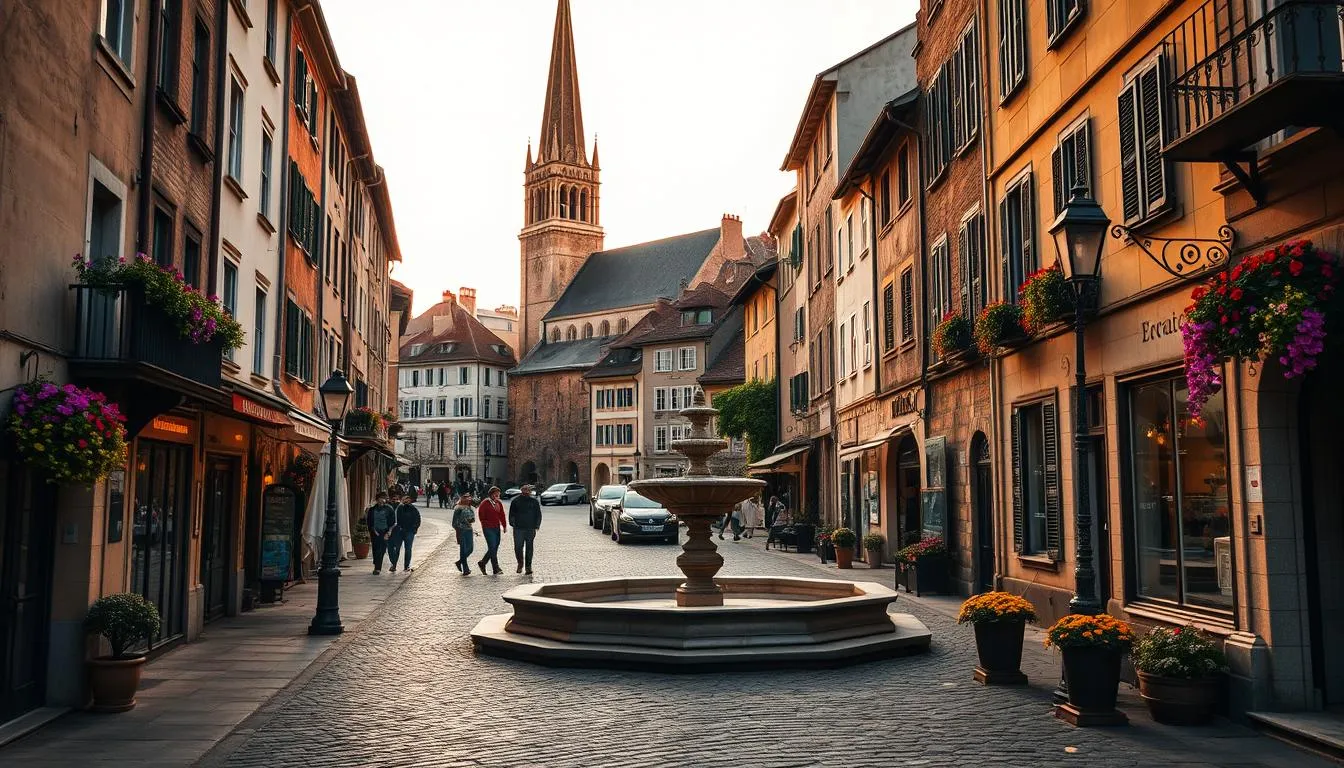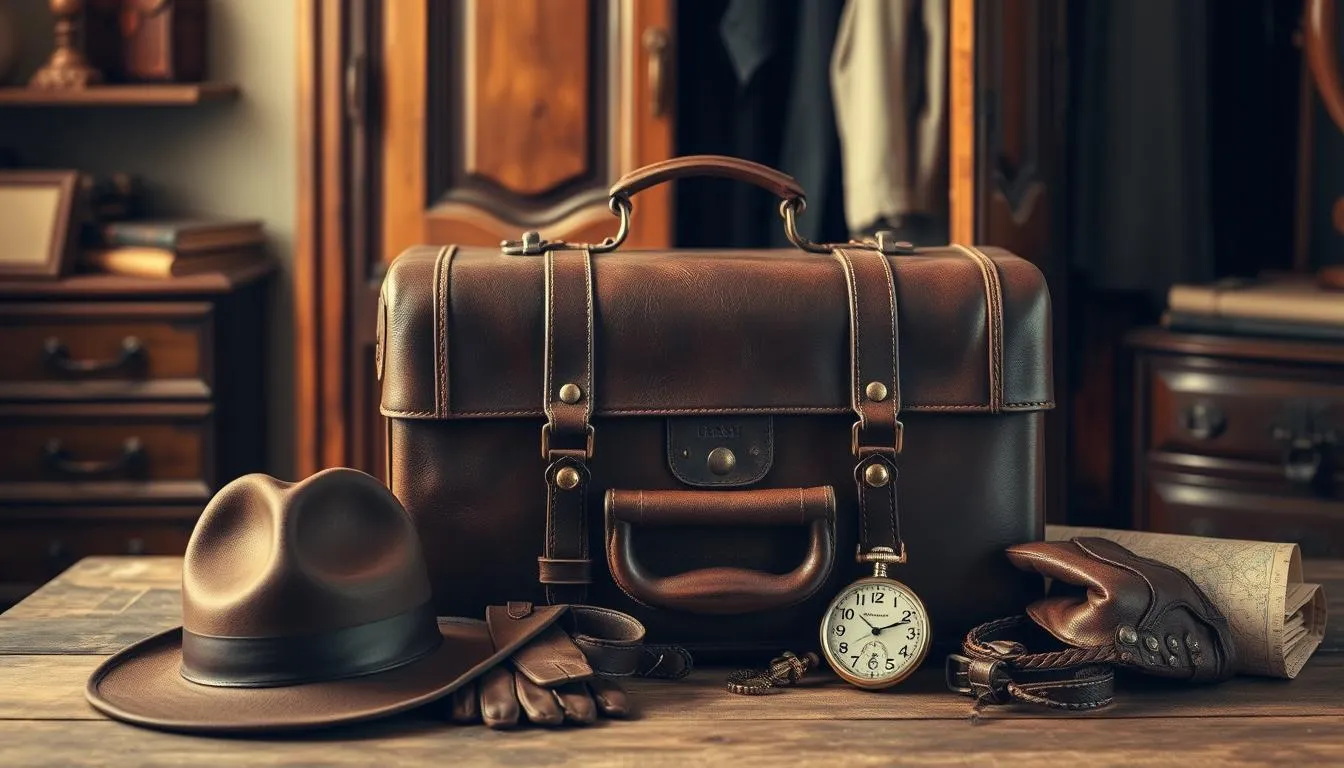Did you know 74% of travelers now hunt for secondhand finds while they explore? Booking.com’s 2025 data shows a big shift: people want pieces that carry the spirit of the places they visit. This trend blends shopping with curiosity and memory.
Think of this as a friendly, immersive way to see the world. It pairs seaside heritage and old-world markets with American classics like Route 66 towns.
More than bargains, it’s about connection: items bring time and story home. Headlines of thrift-shop wins—an L.L. Bean coat found cheap or a $15 gown by Oleg Cassini—show how surprising treasures surface.
Practical travel trends back this up: many people report finding better quality abroad. We’ll outline where to go, how to authenticate pieces, and decisions on carrying versus shipping so your finds arrive safe.
Expect a route-friendly list of destinations, shopping tips, and quick resources you can act on right away.
Key Takeaways
- Vintage voyaging mixes travel and thoughtful shopping to connect with places.
- Secondhand interest is high—many travelers seek quality and story in their finds.
- Destinations range from coastal markets to historic American towns.
- Learn simple authentication and packing tips to protect fragile items.
- Surprising designer and outdoor-label discoveries happen where you least expect them.
Timeless Places to Spark Your Vintage Voyaging Itinerary
Start your itinerary with places that feel like living museums, where streets and stalls keep stories in plain sight. This approach helps you travel slowly and notice detail. It turns simple errands into a rich journey.

Along the Suffolk Coast on Foot: A Melancholy Journey Through the Past
Walk the Suffolk coast on foot and use W. G. Sebald’s reflective path as inspiration. The route folds author homes, shipyards, and small museums into a quiet, layered past.
Old-World City Markets Around the World: Where Stories and Style Meet
Seek out city markets where local dealers know provenance. Arrive early, ask questions, and visit nearby repair ateliers to extend an object’s life.
American Classics: Route 66 Towns and Historic Main Streets That Time Didn’t Forget
Map a Route through neon signs and family-run thrift shops. Main streets in small towns often keep midcentury style in circulation and unexpected finds on offer.
Seaside & Fishing Heritage: Ports, Fleets, and the Culture They Carry
Pair seaside stops with working harbors and maritime museums. Learn how fishing fleets shaped workwear—oilskins, guernseys, and hardy denim—still surfacing in regional shops.
Quick comparison of places to visit
| Type | What to Look For | Why It Matters |
|---|---|---|
| Coastal walk | Small museums, author sites | Context adds value to finds |
| City market | Provenance, repair ateliers | Better history and condition |
| Main street | Neon, thrift stores | Midcentury pieces remain local |
Take notes on memorial plaques and shipyards; these small facts give objects real story.
— travel practice inspired by W. G. Sebald
Why Vintage Is Having a Moment: Present-Day Travel Trends Shaping the Way We Journey
On many trips, buying a well-made secondhand piece has become part of the itinerary. Booking.com’s 2025 report calls this trend vintage voyaging, noting that 74% of travelers now hunt pre-loved items and 38% of Americans want a vacation wardrobe.

From Wardrobe to Memory: 74% Seek Secondhand Finds Abroad
People prize quality and story. Twenty-seven percent of Americans report finding better construction abroad. That makes a single buy feel like a smart buy for years to come.
Bringing Home the Story: Better Quality, Culture, and Personal Mementos
Talk with a market manager or vendor to learn provenance and care. A short chat can reveal maker names, repair tips, and local sources you won’t see online.
- Buy pre-loved for designer value when budgets matter.
- Document finds—photo the storefront and note the stall—so the piece keeps its travel story at home.
- Plan packing so you can wear new purchases on the return trip.
| Motivation | Action | Benefit |
|---|---|---|
| Quality | Seek well-made garments | Lasts for years |
| Culture | Choose local textiles | Stronger bond to place |
| Value | Buy pre-loved designer pieces | More style for the year’s budget |
“Travelers want pieces that capture the essence of destinations,” says Ben Harrell, U.S. managing director at Booking.com.
— Ben Harrell
Smart Vintage Finds on the Road: How to Shop, Pack, and Ship Like a Pro
Good finds start with a plan: know how to authenticate purchases, pack them safely in your luggage, and choose whether to carry or mail items so they arrive home in one piece.

Authentication Basics
Start with trusted partners. Favor resale platforms and dealers with documented brand authentication processes and a track record since 2012. Many such platforms are featured in magazines and work with luxury-market dealers and celebrity clients.
Cross-check labels, stitching, hardware, and materials against reference archives before paying for high-ticket pieces.
Packing and Luggage Tips
Pack like a conservator: use acid-free tissue to pad shoulders and folds. Nestle beaded items in soft pouches and balance weight in your luggage to avoid crushing.
Store leather and suede in breathable cotton bags. Fold knits to prevent stretching during long travel.
Shipping vs. Carry On
Ship bulky coats and hardgoods from cities with reliable carriers, add tracking, and insure for replacement value. Carry on fragile garments, jewelry, and irreplaceable things.
“Document contents with photos and keep receipts to simplify customs and claims.”
- Build rapport with vendors; courteous regulars often get first notice of new stock.
- Carry a small brush and travel steamer to care for finds while away.
- Schedule an eco-friendly professional clean when you return to keep pieces wearable for years.
| Step | When to Do It | Why It Helps |
|---|---|---|
| Authenticate | Before purchase | Avoid costly mistakes |
| Pack in luggage | During travel | Protect shape and embellishments |
| Ship with insurance | From major city | Lower risk for bulky items |
| Record & clean | Before shipping or on return | Proof for claims and long-term care |
Vintage Voyaging Your Way: Routes, Books, and Culture to Guide the Trip
Use literature as a compass to find lanes, markets, and makers that hold living memory.
The Rings of Saturn by W. G. Sebald makes the Suffolk coast a map of memory.
His walk ties writers, maritime histories, and even silkworms into a meditation on the past.
Reading the Route: Literary Journeys That Turn Places into Living Stories
Curate a short reading list that doubles as a route map. Pair Sebald with local guides to see how books frame landscapes and surface history.
- Balance big city stops with small bookshops and archives where local historians point you to markets and textile museums.
- Design a journey that layers eras—Victorian arcades, midcentury diners, and modern design districts—to see how a city evolves.
- Use books to decode motifs in garments and objects, linking cuts, embroidery, and wear to lived culture.
- Plot your route around festivals, flea markets, and fair calendars; anchor mornings at markets and afternoons in museums.
- Keep a simple field journal: note the city, stall, and a short anecdote for each acquisition to preserve story and provenance.
- Seek community ateliers that teach repair skills so you can learn to darn, patch, or reline pieces you love.
“Treat each stop as an exchange: listen to sellers’ family histories and neighborhood lore.”
| Guide | How to Use It | Benefit |
|---|---|---|
| Books as maps | Follow chapters to local sites | Deepens context of finds |
| Neighborhood bookshops | Ask curators and historians | Discover hidden markets |
| Field journal | Record city, stall, anecdote | Preserves provenance and story |
| Ateliers & classes | Learn repair techniques | Extend life of objects |
Conclusion
Choose routes that leave room for detours; those turns often yield the best discoveries.
Vintage voyaging is a memorable, sustainable way to explore. Booking.com’s trends show many people find higher-quality secondhand pieces abroad—think an L.L. Bean coat later worth hundreds or a $15 Oleg Cassini gown. These things change how you remember a city or coastal path.
Walk parts of your route on foot, pick a few places that call to you, and allow extra time for markets and estate sales. Authenticate smartly, pack thoughtfully, and decide what to ship so treasures reach home safe.
Note where and from whom you bought each item; the story outlasts the year. Ready to start? Pick a destination, set a simple budget, and plan one market per day—your next timeless piece may be just around the corner. Learn more on new travel trends in 2025.
FAQ
What is the best way to plan an itinerary focused on timeless travel destinations?
Start by choosing a theme—coastal ports, historic main streets, or old-world markets—and map a route that links a few nearby towns. Allow slow travel days to walk, browse local shops, and visit museums. Pack light, bring sturdy walking shoes, and pick accommodations near the places you want to explore to save time and soak up atmosphere.
How can I make the most of walking routes like the Suffolk Coast trail?
Break the route into manageable stages and book lodgings ahead for each night. Carry a daypack with water, snacks, a lightweight rain layer, and a printed map or offline map app. Stop at small museums, tea rooms, and fishing ports to learn local history and meet people who keep traditions alive.
Where should I look for authentic secondhand fashion while traveling?
Seek out respected resale shops, curated vintage boutiques, and well-rated flea markets. Use apps like Depop or The RealReal to research items and sellers in advance. Inspect seams, linings, and labels for quality, and ask shop staff about restoration or provenance when available.
How do I tell if an item is authentic or high quality when shopping abroad?
Check construction details—hand stitching, fabric weight, and hardware quality. Look for maker’s marks, labels, and care tags. When in doubt, ask for provenance or a receipt and compare the piece to trusted online resources or brand guides. Trusted local dealers and established shops often provide more reliable pieces.
What are smart packing tips for carrying delicate finds home?
Use acid-free tissue paper and breathable garment bags for clothing. Wrap fragile items in bubble wrap and place them in the middle of your suitcase surrounded by soft clothes. Keep valuable or fragile pieces in your carry-on when possible to reduce the risk of damage or loss.
When should I ship purchases home instead of carrying them on the plane?
Ship when items are bulky, fragile, or exceed baggage allowances. Use reputable international courier services and insure shipments for their declared value. Ask shops to assist with packing for transit and request tracking and signature-on-delivery options for extra security.
How can I preserve and care for vintage textiles and leather after I return?
Clean items according to material—consult a specialist for delicate garments. Store clothes flat or on padded hangers in breathable garment bags and avoid plastic for long-term storage. For leather, use pH-neutral cleaners and conditioners and keep pieces away from direct sunlight and humidity.
What cultural etiquette should I keep in mind when browsing markets and small shops?
Greet vendors politely and ask before photographing merchandise. Bargaining customs vary—research local norms first and be respectful when negotiating. Small purchases are often conversation starters; showing genuine interest in a seller’s story builds goodwill and may lead to better finds.
Which route or book can inspire a literary-themed travel plan?
Classic travelogues and regional novels offer rich context—try works by authors like Elizabeth von Arnim for English countryside vibes or Jack Kerouac for road-trip inspiration. Pair a favorite book with sites it references to bring the story to life in towns, cafés, and coastlines mentioned on the page.
How do current travel trends influence how people search for secondhand finds abroad?
Travelers increasingly value sustainable shopping and unique souvenirs. Many now prioritize quality over quantity, seek locally made goods, and use apps or social channels to locate vetted shops. This shift makes it easier to find well-preserved pieces with cultural stories attached.
Are there safety or legal considerations when exporting antiques or cultural items?
Yes. Some countries restrict export of certain antiques, textiles, or archaeological objects. Always ask sellers for documentation and check customs rules for both the country you’re leaving and your destination. Declare purchases at customs when required to avoid fines or confiscation.
How can I estimate the value of a thrifted gown or classic jacket I find while traveling?
Research brand labels, era-specific details, and condition. Compare similar listings online, consult price guides, or ask experienced dealers for a quick appraisal. Provenance, rarity, and intact original components raise value significantly.
